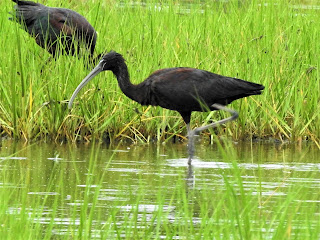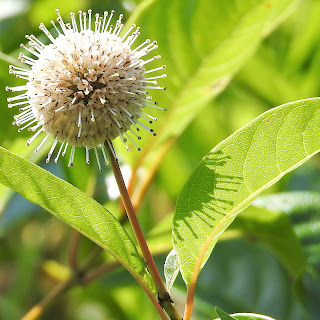Glossy Ibis

by Sue Pike published weekly in these seacoast newspapers The York Weekly/Portsmouth Herald/Fosters Daily/Exeter Herald Glossy ibis are a bird I never expect to see around here-they look like they should be hanging out in the tropics, wading through some Amazonian mudflats with their long spindly legs or swooping over a crocodile-infested watering hole in the African savanna. They are close cousins to the more commonly recognized great blue herons and egrets. There is something very “New England” about a great blue heron or a snowy egret regally perched on the edge of salt marsh. People have weather vanes on their houses and lawn art that depict herons in this regal pose or flying overhead, necks tucked in, still stately in flight. Ibis somehow don’t conjure up the same image. However, since I first saw some drop down into a New England salt marsh, I was in love. Glossy ibis crabbing in salt marsh panne Sue Pike photo Gloss...



